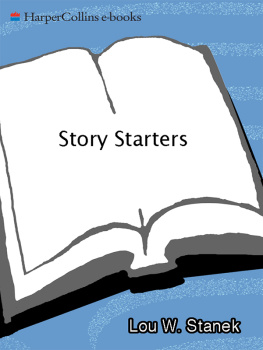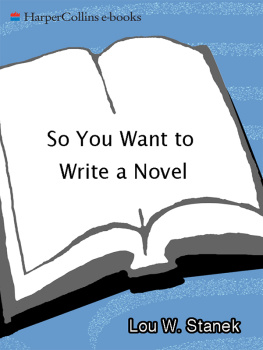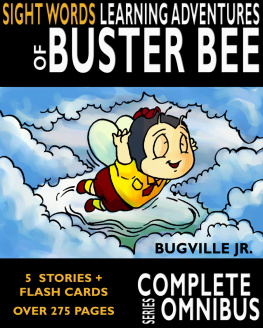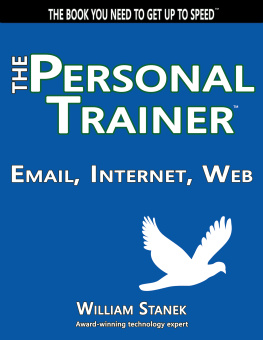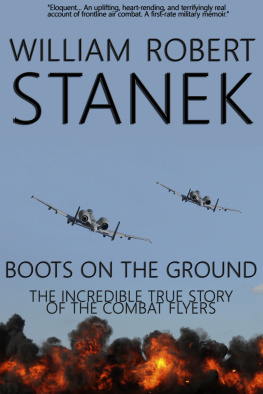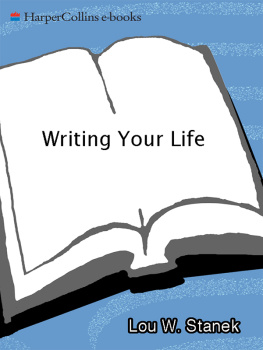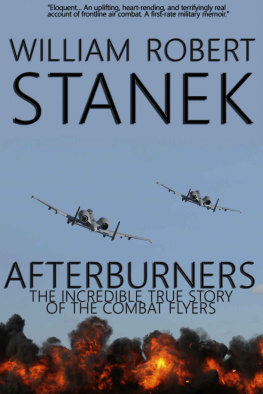Story Starters is for writers what Impromptu Theater is for actors.
When Mike Nichols and Elaine May were struggling students at the University of Chicago, they hung out at a local bar where the regulars would buy the beer in return for comedy routines invented on the spot. Nichols and May became rich and famous beginning with those stories started from suggestions by the patrons. By the time they left Chicago, they had polished a cache of material they were to use for years. I wrote Story Starters because Im convinced the process works for writers.
Evidence abounds. This book is crammed with anecdotes about writers who found ideas for stories from sources other than their own imaginations. Some are well known. Others, like you, hope to be.
William Faulkner saw a little girl with muddy drawers climbing a tree. The image, recorded in his notebook, became the stimulus for his classic, The Sound and the Fury .
Paul Byerly, a writer in my New School class, went to a fancy dinner party. The affluent host said when he was young, his father had promised to buy him a bike, but reneged, so he stole one. Paul never saw the man again, but he put the remark in his notebook. Eventually, he wrote a novel, How to Steal a Bicycle . Pauls protagonist stole fifty-two.
Several writers have found a tale to be told in a wave, not the wet kind, but in the flutter of a hand. Peter Sis was still a foreigner to our culture, and lonely, when he thought a friendly New Yorker was waving to him, but she was hailing a cab. He wrote it down and now kids see it happen in Waving . Ive always wanted to pull that chap out of Stevie Smiths poem and wrap him up in a story. You know, the one who said, I was much too far out all my life/ And not waving but drowning.
Eudora Welty lived as uneventful a life as Emily Bront, but look at the stories they wrote. Welty took ideas from photographs she shot while working as a newspaper society editor. Barbara Lucas, a writer in my workshop, swears she saw a vision of the entire plot for her complex novel appear from a picture postcard, the reproduction of an eighteenth-century painting.
Norma Klein saw a newspaper story that went into her notebook, but wouldnt stay put. A teenage couple in South Carolina traded their baby for a red Camaro, the article said. The plot for Normas novel. The Swap , is woven around the used-car salesman and the baby with the big ears.
Each summer I rent a big house next door to mine on Bailey Island in Maine and invite ten writers to come for a workshop. They find stories in the thunderous waves rising one above the other into the air, the cry of the gulls with the old, crabby faces.
Dont be discouraged if you want to write but have not found your material. Stay with me. You will. Not all good writers have a stash of stories waiting to be told. Legend has it, on the Oakland waterfront, around the turn of the last century, Jack London to pay for his supper sold plot proposals to other writers. You wont have to, but some novelists have even gone to extremes searching for tales. Hemingway almost got himself killed by bulls and bullets to have experiences to write about, and Fitzgerald ruined his liver looking for material at parties for the rich.
Granted, many soldiers came back from Vietnam determined to update Heart of Darkness , and many young people returned from the bright lights of the big-city streets having found their muse in clubs and drugs. But just because someone wants to write, she doesnt have to have faced the grim reaper, ruined her nose with coke, or had a long session with a Scotch bottle.
Story Starters contains not only a myriad of ideas for characters, settings, and themes to be developed into narratives, but a process for learning how to think like a writer and create them yourself. Think of yourself as a Rolls Royce with a dead battery, the exercises as a jumper cable.
Picture this: A woman sits on the floor of her flat, surrounded by dusty, unopened, moving cartons packed seventeen months ago. Moonbeams, the only light, spill in the window. Think like a writer:
How old is she? What is she wearing? Is her expression sad, smug, scared, sneering? Where is this apartment? What sounds does she hear? Do they come from outside or within her head? What time is it? What year? What is her name? Why is she there? What is packed in the boxes? Why doesnt she open them? What does it mean? Tell your typewriter about her. Then just try to forget her. She will stick with you until you tell her story. Believe it.
Before we go any further, however, I must warn you. Thinking like a writer will change your life. You think your Aunt Mable was a nag? Wait until you find a character who insists you tell his story. A glorious Indian summer day peaks flirtatiously through the sliding glass door maybe the last of the season you start to put on your walking shoes, but your protagonist begins: Youre going out and leaving me in the middle of chapter seven with the most important decision of my life yet to be made? Youll lose the momentum, wear yourself out, slow down the pacing. So you untie the laces, turn on the computer, and when you look up again, the man in the moon winks at you.
Writing can be as addictive as computer games. Your plan might be to pick just one idea, write one short story some rainy Sunday afternoon just to see if you can do it just for the fun of it, but writing is like eating only one cashew from a full bowl. Getting hooked on writing stories is not a bad habit, but I strongly suggest you not take your laptop on your honeymoon.
You wont have to quite your day job. Writers in my workshops and New School classes continue to design costumes for Broadway shows, work in the library, put on their hard hats, drive cabs, deliver sailboats, report the news, raise kids, teach school, fact check for magazines. But as we go to press, two successful lawyers have given notice. It will be okay. They both write better than John Grisham.

